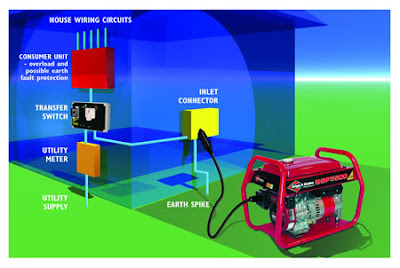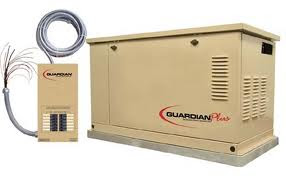SUBSCRIBE To Our Mail List To Get This Article In PDF
Poor heat dissipation from control transformer leads to fire in transfer switch.
After a fire broke out in a hospital's 1000A automatic transfer switch (ATS), everyone involved was left searching for answers. Again and again, the same question was asked: Why would a fire start in a switch that operated without noticeable incident for several years? The answer: poor heat transfer.
Excessive heat buildup from two small control transformers fastened to an insulated (electrical and thermal) backboard in the ATS enclosure caused the board to start burning. Slowly, areas of the board carbonized causing a conductive path that allowed current to flow. This situation resulted in a short in the ATS that ultimately led to a generator lockout.
Hoping to find a design defect in the ATS, the hospital's insurance carrier asked this author to perform a "cause and origin" analysis in response to the fire. Such a finding would enable them to transfer the cost of cleanup, switch replacement, and installation to the switch manufacturer.
To maximize the effectiveness of the interview with the hospital's chief engineer, I conducted a quick inspection of the previously removed, coffin-sized, cabinet-enclosed switch, the replacement switch in the electrical panel room, and the remote generator. Trying to reconstruct events leading up to the fire, I learned the "night watch" had reported an alarm from the emergency generator on the hospital's computerized building control system to the building engineer at approximately 4:30 a.m. Finding the generator off, he depressed a reset button on the auxiliary input board, and then manually started the generator. It shut down within seconds.
At 5:00 a.m., the nursing staff smelled smoke and pulled a fire alarm box, which activated distress signals and summoned the fire department. Now distracted from the generator, the building engineer followed the smell to the electrical equipment room where he found smoke coming from the top of the transfer switch cabinet. Inside, he observed flames in the upper left quadrant of the insulating backboard as well as above it on the power cables' insulation. Because he suppressed the fire with an extinguisher, the fire department took no action when they arrived. One firefighter remarked that although the flames were out, the insulating backboard would continue to "eat itself up," as he had seen many times before.
During this time, no one disconnected the power to the transfer switch! Eventually the "B-phase" fuse, supplying power to the switch, opened. After conducting a post fire inspection of the remote generator, the engineering department found its alarms and control circuit board sustained damage. As a result, the insurance company questioned the claimed link to the fire.
Armed with my interview information and initial inspection, my first question was: What had changed? There were no recent construction, maintenance, or situation changes; but something was obviously different. Where was the source of the excessive heat that started the fire? And why did it occur at this time of the morning?
Now I needed the details. The emergency generator fed the ATS through two 350 kcmil copper wires per phase. The utility power input and load output were four 4/0 AWG aluminum wires per phase, connected in the upper left corner. There was no evidence of arcing. Checking the obvious first, the power wiring connections (particularly on the aluminum wires), I closely inspected them for signs of overheating. The ATS had been installed within the last three to six years, and its connections had been checked with an optical thermometer the previous summer. Removed from their busbars, the two lugs nearest the fire's origin showed no signs of overheating. One set screw was removed from a lug, and that wire showed no sign of overheating. The remaining set screws were too tight to remove without stripping their hex heads. Given the results of the initial disassembly, nothing indicated further disassembly of the other connections would identify the cause of the fire. The first hunch was a dead end.
There was heat damage at least two thirds of the way down the cabinet. Although a fire often starts at the lowest point of heat damage, I looked for the origin at the top of the backboard because I found the only remaining potential heat sources located within the burned area.
Fastened to the backboard by four steel screws each, I noticed two small control transformers near the proposed origin. Heat from the transformers would flow readily into the steel screws imbedded within the insulating (thermal and electrical) backboard. Their equilibrium temperature easily approached the highest temperature of the transformer. The enclosure contained a strip heater to remove moisture, but there were no vent openings.
There was no way to remove the heat from these relatively insignificant control transformers. My theory was excessive temperature had carbonized the backboard around the screws. However, would the rest of the evidence support my hypothesis? The investigation now acquired focus. This deterioration would have spread through the backboard to other conductors, where current would leak through the carbon, creating heat that would further carbonize the insulating backboard, cascading to a disaster.
But why did the fire start in a switch with such a good safety record? Something had changed, but what? Sometimes, rather than an instantaneous failure, a gradual deterioration occurs. In this case, it took many months for the carbonization of the insulating backboard, caused by the transformers' focused heat, to reach over to the "A-phase" terminal of the copper generator supply wire. This high-power terminal briefly applied voltage to the carbonized backboard during the weekly state-mandated generator test. This allowed short bursts of additional deterioration: a cycle that continued until a piece of carbon fell back against the utility input bus, allowing a full-time heat source to accelerate the decay.
At the top of the backboard, the deterioration eventually traveled to the space between two terminals of the utility power conductors and generated enough heat to ignite their insulation. Even though the generator was off, and flames no longer existed, the carbon track continued its slow burn between the input terminations forming a "U-shaped" hole in the top of the insulating backboard. The sides and bottom of this "U" provided a path for the electric current entering at its top, maintaining the carbonization/heating cycle.
As the "U" got deeper, the electrical path got longer, the resistance got higher, and the burning/deterioration cycle slowed down but continued. A red plastic safety cover found melted but not burned at the bottom of the "U" confirmed the fire's origin was at the top of the burn. This explains the firefighter's comment that the insulated board would continue to "eat itself up," even without flame. However, turning the power to the ATS off could have stopped the process. Combined with the current drawn by the switch's load, this leakage current eventually blew the externally located "B-phase" fuse.
So was there a final nail for the manufacturer's liability coffin? On the replacement ATS, made by the same manufacturer, the control transformers were mounted onto large pieces of sheet metal. This removed them from direct contact with the backboard, distributing their heat evenly and acting as "heat sinks" to allow circulating air within the cabinet to remove their heat before creating "hot spots." It appeared the design problem I observed may have already been corrected.
However, there were still some loose ends. What caused damage to the emergency generator circuit board? The switch's status signal wires, from the ATS to the generator, passed over the fire area near the origin. When their insulation melted off, they contacted a power source that sent extraneous voltage to the generator alarm and control circuit board through the auxiliary input board. This caused the initial alarm. The generator operating manual cautioned against applying voltage to these wires because it would damage the alarm and control board.
But why did the generator shut down? Generator instructions noted certain conditions that would cause the "auxiliary input" board to require a reset, which would automatically shut the generator down. One was a damaged control and alarm board. Therein lies the link to the remote fire.
Finally, why did the engineer see smoke at the top of a totally enclosed cabinet? The fire melted some cast conduit fittings, creating breaches in the top of the otherwise airtight enclosure.
I successfully accounted for all the evidence; but were my findings farfetched? I didn't think so. In two other cases, plastic electrical insulation had carbonized, become conductive, and caused disasters because of the heat buildup. One occurred at the base of a small ice cube-style relay; another within a microswitch exposed to moisture that had initiated electric leakage resulting in excess heat.
The law regarding product defects holds the designer liable for damages resulting from a failure to anticipate and correct any catastrophic failure modes. The ATS manufacturer may have had similar failures that led to the changed design. For this investigation, the switch manufacturer was liable for the damage. If you design electrical systems, take steps to safely provide for heat dissipation from equipment that can generate high temperatures.
SUBSCRIBE To Our Mail List To Get This Article In PDF



